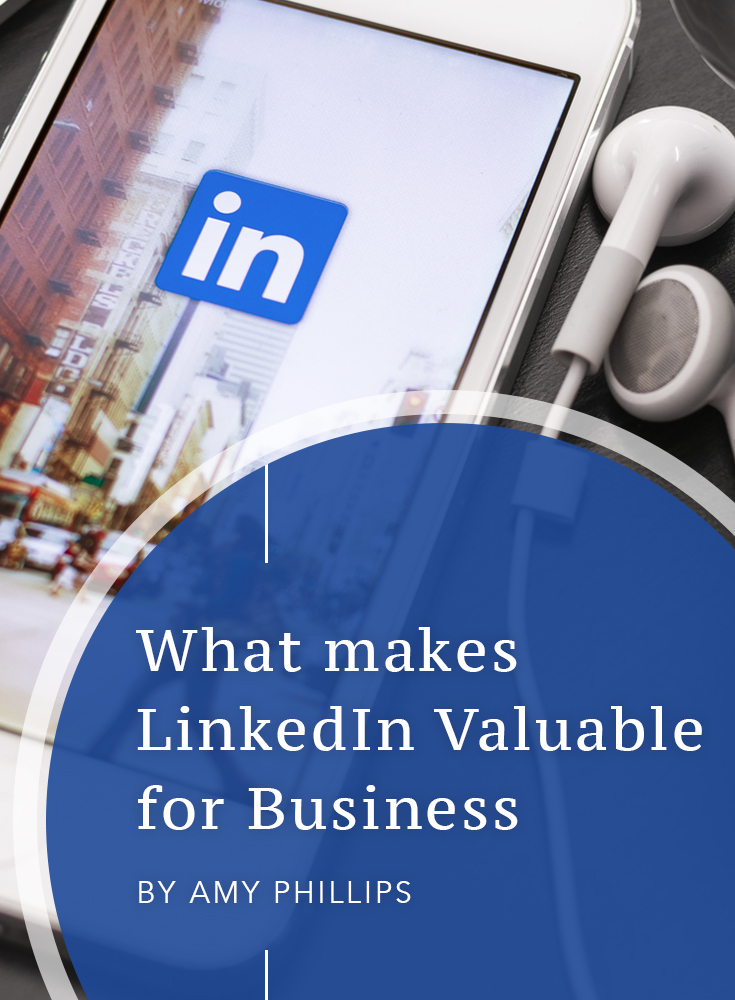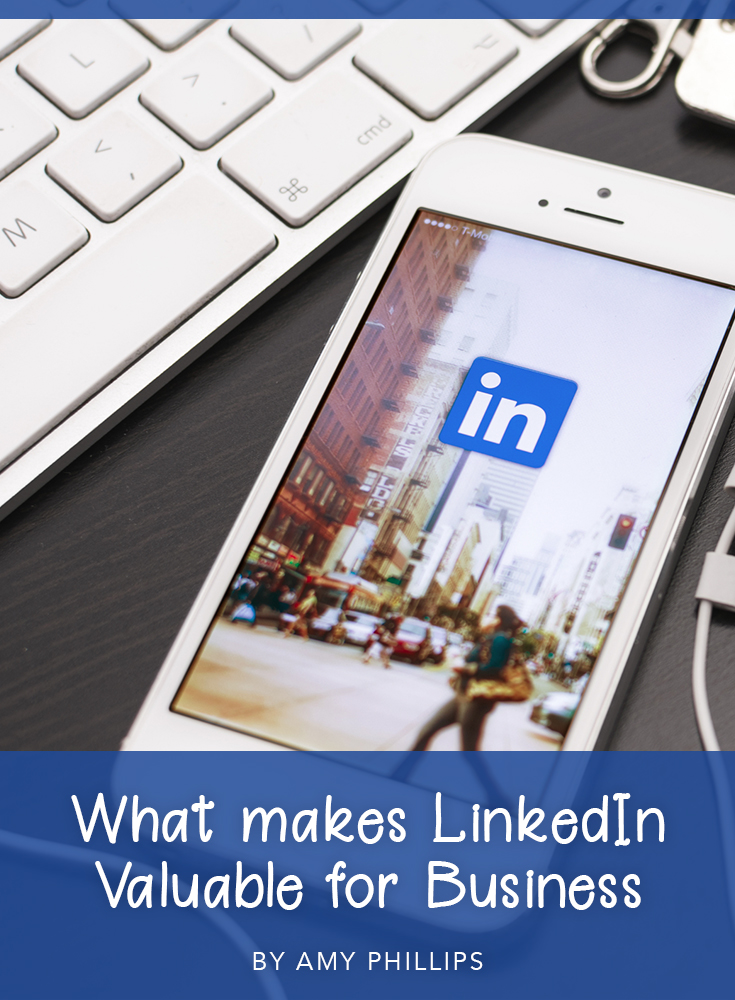When you hear the words social media what comes to mind?
For many of us social media can be overwhelming, especially if we are navigating multiple platforms. So when someone asks if you are on LinkedIn you may be thinking “Another platform? I have a following on Facebook (or Twitter), why do I need LinkedIn too?”.
The reason: LinkedIn is not just another social media account, it’s a business/career tool.
In this post, I am going to unpack the key reasons why LinkedIn is important, how to use it for the best results, and pro tips on how to get the most out of your network.
Connections + Partnerships
LinkedIn provides the opportunity for you to build and maintain a network of professional connections.
At it’s basic level, LinkedIn is a digital rolodex. It allows you to keep a running list of professional contacts and colleagues. Whether you work with them regularly or just met them at a conference, they are all in one easy to access place. If someone switches jobs, you not only know about it, but are still able to contact them even though their email address or office number may have changed.
Now let’s talk about the network aspect of LinkedIn. Unlike a rolodex that simply displays someone’s contact info, LinkedIn shows you all the individuals that your connection has in their network. This gives you potential access to a broader reach of individuals. Obviously, you want to navigate this carefully and be strategic about when and who you reach out to for introductions. But for those connections you have established a relationship with, asking for an introduction can easily be facilitated through the Request an Introduction feature on LinkedIn.
And along that same vein make sure to contact your connections periodically. If you take the time to check-in with people when you don’t need something, then when you do need a referral or help, they will be more likely to oblige.
Lastly, LinkedIn affords us the opportunity to connect with others professionally, while leaving the bulk of our personal lives for other social platforms. I say the bulk, because I do think it’s important to be human and relatable on LinkedIn, which means sometimes you have to get personal; you come across more genuine and people can connect with you as a person, a parent, etc. That being said, be selective in what you post. For example, posting a picture of your family on vacation and talking about the importance of taking a break and recharging tells a lot about you professionally and personally. Posting a meme or a funny cat video doesn’t tell anyone anything about you, it’s not useful in most cases, and clutters up news feeds.
PRO TIP: Always include a personalized message* when sending a new connection request to someone on LinkedIn, whether you’ve met them before or not.
A lot of people fail to do this and ultimately reduce the potential of the connection they are trying to make. I like to equate sending a LinkedIn request without a message to handing someone your business card but not shaking their hand and introducing yourself. Just because this interaction is digital doesn’t mean that social protocols go out the window. The simple action of indicating why you’re interested in connecting (shared connections, collaboration, referral, more info about their company, follow up to meeting them in person) does a couple of key things:
- Increases the likelihood that someone will accept your request (Linkedin will lock your account if too many people reject your requests.)
- Opens up a dialogue between you and the other person
- Provides your new contact some basic info about you, thus equipping them to potentially refer work to you
*The desktop version of LinkedIn asks if you would like to send a message when submitting a request. However, the LinkedIn app does NOT give this option. This means it’s your responsibility to go the extra mile and send a quick message via LinkedIn messenger.
Professionalism
In an age where everyone and everything is easily found on the internet with a quick search, it’s important that results about yourself or your company contain accurate and professional information. LinkedIn provides a great platform to present your work history, community involvement, and education in an easy to read format. The summary section also allows you to directly communicate with others what you’re focused on professionally, who you are looking to connect with, and the easiest way to get in touch with you. Whether it’s a potential employer or client, LinkedIn provides a platform to tell others who you are in a professional capacity, how you can help them, and what you advocate for.
PRO TIP: The more active you are on LinkedIn, the more validity you give to your profile.
At the top of every profile is a running list of recent activity (likes, comments, posts, etc). This means that others can easily see whether or not you are engaged with LinkedIn on a regular basis. It not only gives them a snapshot into who you’re engaged with or what your interested in, but it subliminally says you’re profile is probably up-to-date.
And on that note, don’t make your recent activity feed a liar – update your profile on a regular basis. When you get a new job or get promoted within your existing company, update your profile. Even if you don’t have anything major to update, get in the habit of updating your profile at least once a year. Whether it be adding community involvement, or just freshening up your summary at the top of your profile, make small changes regularly.
Marketing
Whether you own a business or are an employee, LinkedIn provides the opportunity to promote your company and potentially increase sales. That being said, the core of LinkedIn is community, authenticity, and conversation, so how you promote your business is really important. Posting about your services or a special offer is probably not going to get you much traction. However, if leading up to that post are several posts containing industry expertise or thought leadership, people are going to be more likely to engage with you for business.
A great example of this that I’ve seen is by a local lawyer here in the Baton Rouge area. Most of his posts contain useful articles related to his practice such as explaining what a legal term means or outlining the inner-workings of the legal process. His posts typically correlate with major cases or issues in our community, which aids in making his post relevant therefore gaining more interactions. Ultimately, it gives him an opportunity to open up conversations with others, while establishing his law firm as an expert in the industry.
PRO TIP: Offer to Write Recommendations for Clients/Colleagues
LinkedIn is about building community not just growing business. One of the best ways to build your community is to give before you get. Offer to write a recommendation for a vendor, client, or colleague before you ever ask for one yourself. Many times people will write them back, but even if they don’t you have contributed to the LinkedIn community.
Storytelling (Advice)
I know what your thinking, “Storytelling, isn’t that basically marketing? I manage a team of structural engineers why do I need storytelling”. The marketing team is telling your company’s story, not your story. You are the only one who can share your expertise and knowledge on Linkedin; whether by commenting on others posts or writing your own LinkedIn articles. Begin to build the story you want to share about yourself, the one you want people to remember when they think of your name or introduce you to someone.
PRO TIP: Add a comment (thought leadership) to anything you repost.
I see so many shared posts on LinkedIn that do not have any personal messages included with them. My immediate thought is “Why was this article, post, or quote worth reposting?”. As a member of your network, I want to know why YOU thought this was important enough to share with me. Did a particular part of the article really get you thinking? Do you disagree with the article? If so, then what are your thoughts? Why is this charity event different than the one the next guy posted? Take this opportunity to 1) provide some thought leadership on a topic and 2) start a discussion with other community members.
• • •
Hopefully, the breakdown above has given you a glimpse into the power of LinkedIn as a business tool, and cleared up the idea that it’s not just another social platform. The tips above are just a few things that anyone can use to help maximize their experience, create a bigger community, and establish themselves as a thought leader. If you have questions or want to share your own tips with us, feel free to drop us a line.


| [prev] | [next] |
